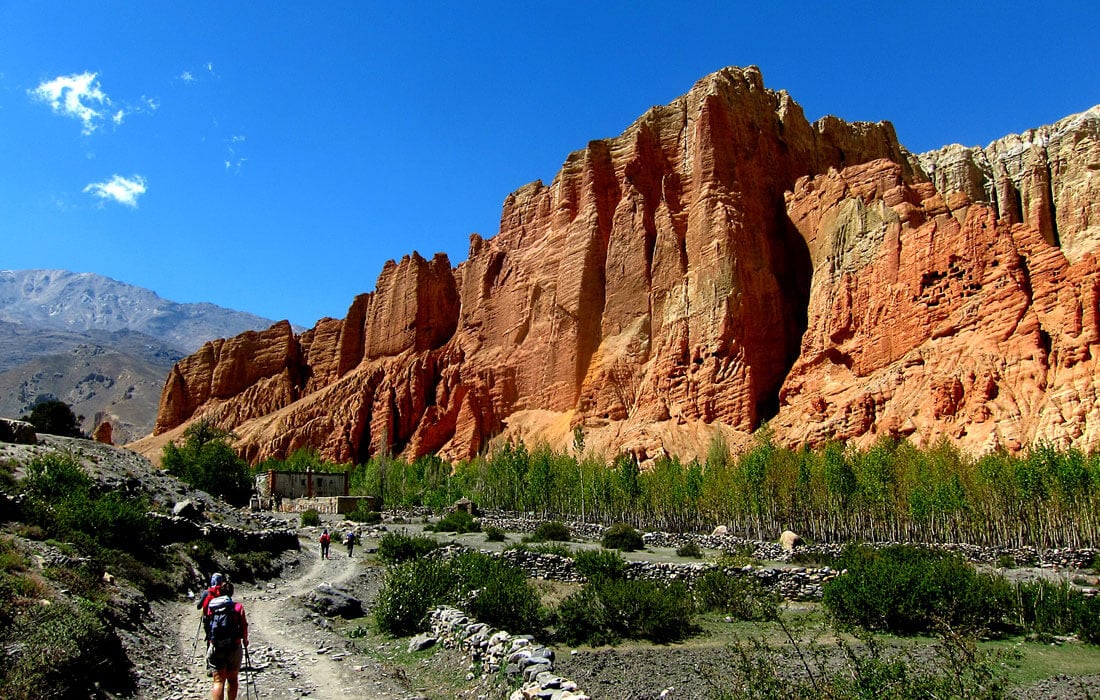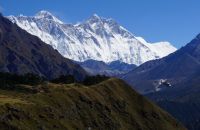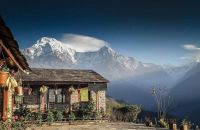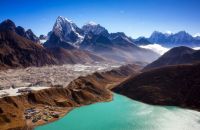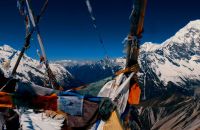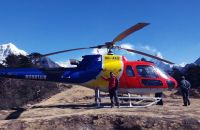Talk with our local travel specialist who can help organize your trip.
8 Most Popular Trekking Regions of Nepal
You cannot possibly hope to see all that the Nepalese mountains have to offer on one trip. In fact, even if this was to be your fifth or sixth trekking trip to Nepal you’d still only be scratching the surface of all the delicious diversity the Nepalese Himalaya offer. To help you choose which trekking region to focus on, in this article we will give you a rundown of all of Nepal’s trekking regions and where to go.
Before you lace up your boots and hit the mountain trails it’s important to work out exactly what style of trekking you want to do. Do you want to blast an adventurous trail over little trodden mountain paths where facilities are few and far beyond and for the most part it will just by you and your trekking team? If so then you need to organise a full camping trek through a Nepalese trekking company. If you prefer the security of a well-beaten path with plenty of company and a secure trekking lodge (teahouse) at the end of a long day then you’ll need to concentrate on one of the more popular Nepal trekking regions.
Table of Content
#1. Everest Region
Literally and figuratively standing tall above all others, Mt Everest, (8848m) the highest mountain on Earth, exerts a magnetic pull on trekkers, mountaineers and armchair adventurers alike. Yes, the main trekking trails here can be busy, but for sheer awe-inspiring mountain scenery no other trekking region in Nepal can come close to the trails that thread through the Khumbu (the name given to the area around Everest).
Arguably Everest Region is the most popular trekking region in Nepal, the Everest region has a very well-developed trekking tourist infrastructure with high quality, comfortable trekking lodges (there are even a growing number of genuinely luxury places to stay); lodge restaurant menus are unusually varied and the organisation and information as good as it gets in the high mountains. With no complicated permits required and no need for any form of camping equipment, this is independent trekking at its best and a place that is as enticing for seasoned Himalayan walking veterans as it is for fresh-faced, wide-eyed trekking newbies.
However, it’s worth noting that the majority of trails in the Everest region take you up high (well above 5000m) and the risk of AMS on many routes is high. Therefore you shouldn’t hurry any of these routes, build in plenty of rest days and take the time to enjoy this outstanding place. Getting to the Everest and Khumbu region normally involves flying and this can be costly. Plus you should keep in mind that most treks here tend to be quite long and tough.
#2. Annapurna Region
From the lakeside resort town of Pokhara a great wall of white fills the northern horizon. This is the Annapurna range which tops out with the 8091m Annapurna I, which was the first of the mighty ‘8000ers’ to be climbed (by Frenchmen Maurice Herzog and Louis Lachenal in 1950) and is perhaps the best overall trekking region in Nepal. There’s a huge range of variety here from short, simple, low altitude walks, which can be done comfortably as a family, to challenging, high level treks that stretch out over weeks. No matter which trek you opt for the mountain scenery in this region will leave you in awe. Standing in the heart of the cirque at the end of the Annapurna Sanctuary trek can move you to tears while the bleak and cold wilderness surrounding milky magical Tilcho Lake will remain engraved in your mind for years to come. And then there’s the Annapurna Circuit. The classic walk of Nepal that, for many years, was quite simply considered the single best trek on this planet.
And it gets better. Not just is the scenery in this annapurna trekking region second to none, but there’s the added advantage of most treks being simple to organise, trail heads easy to get too by public transport and accommodation and facilities abundant and of a very high quality.
#3. Langtang & Helambu Region
The Langtang region, which sits immediately north of Kathmandu, offers some of the most accessible trekking in Nepal. This range is so close to the capital that if you were super dedicated you could literally set out walking from your guesthouse in Thamel (but, because of car traffic and pollution and the great sprawling suburbs of the city, we don’t seriously suggest doing this). The ease of access, easy to follow – and generally fairly short – trails, combined with outstanding and highly varied Alpine scenery, and lots of decent lodges and other tourist facilities has always meant that Langtang has been a popular place to trek.
The Langtang trek is a fantastic choice for those with limited time to trek with the shortest routes taking just a week (or even slightly less) including travel time from Kathmandu. While the Helambu trekking region, which takes walkers through an attractive tapestry of terraced hillsides, pretty villages and blowy passes is a good option with older children. There are also innumerable ways of combining treks in order to cobble together walks lasting several weeks.
Featured Trips
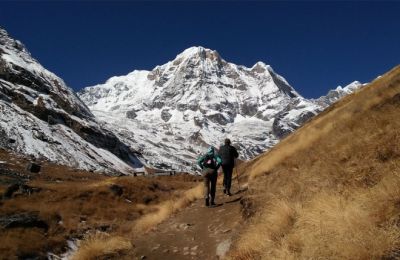
Annapurna Base Camp Trek - 11 days
Annapurna Base Camp Trek - 11 days takes you close to the world's 10th highest mountain, Annapurna I, Gurung culture, rhododendron forest, and terraced fields.
Inquire Now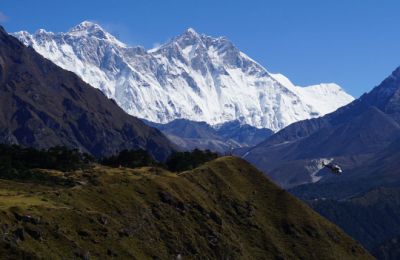
Everest Base Camp Trek - 14 days
Looking for an exciting Himalayan experience? Join us on our 14 day Everest Base Camp Trek - get ready to be stunned by breathtaking views and discover magical Nepalese cultures!
Inquire Now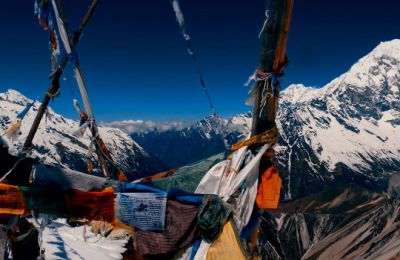
Langtang Valley Trek - 11 days
Langtang Valley Trek is best suited for those looking for a short trekking adventure with amazing Himalayan views and unique mountain culture. Explore Langtang National Park and experience Tamang culture.
Inquire NowWhere to travel next?
Get help from our travel specialists for holiday ideas that matches your interests.
#4. Manaslu Region
The world’s favourite ‘new’ trek. A trekker lucky enough to walk the trails around mighty Manaslu (8156m), the worlds eighth-highest mountain, will start off among fields of rice in hot lowland valleys and then, over the course of 2-3 weeks, climb up through forests, meadows and, finally, through a daunting landscape of rock and ice. The views all along the way are breathtaking and the cultural variety as you pass from lowland Hindu village to highland Buddhist hamlet are as memorable as the scenery.
While the scenery in the Manaslu region is the equal of Everest or Annapurna, the tourist crowds are not. The Manaslu region didn’t open up to foreign trekkers until the early 1990’s (and the neighbouring Tsum valley opened even later) but it become an instant hit with trekkers and in recent years it’s even taken Annapurna’s crown as the world’s best trek. Despite the accolades, the trials here remain fairly quiet (though the number of trekkers is fast increasing) and you have to be prepared for fairly basic trekking lodges and food menus. In general trekking in the Manaslu region is a little harder than the Annapurna or Everest region.
Special trekking Permits and guides required.
#5. Upper Mustang Region
North of the Annapurna Range and sheltered from monsoon rains by a wall of Himalayan giants, is Upper Mustang Region. Long shrouded in mystery and closed to outsiders until 1992, the Kingdom of Mustang is a high-altitude desert of multi-hued gorges, green oases, fairy-tale gompas, prayer flags and blood red fortified monasteries. This is a land so rich in traditional Tibetan Buddhist culture that it can often feel more classically Tibetan than the modern Chinese region of Tibet itself.
Despite Upper Mustang’s image of timelessness, change is coming here. A new road runs up the western side of Upper Mustang and the region is slowly being drawn into more mainstream Nepalese life. But, walk away from the roads and you’ll fast discover a land that can feel unchanged in a hundred years.
It’s worth noting that Mustang doesn’t have the same awe-inspiring close-up views of the mountains as many of the other main Nepalese trek areas and that walking here is as much a cultural experience as a mountain one. You can only trek in Upper Mustang as part of an organised tour with pre-arranged and expensive permits. But, to the surprise of many trekkers, facilities in Upper Mustang are surprisingly good. If you stick to main routes, then a bed in home-style accommodation is always available and staying in such places is highly rewarding.
Much of Upper Mustang is a gently undulating plateau and this relative flatness makes for a reasonably easy trekking region (for Nepal anyway) that rewards beginner and experienced trekker alike.
Special trekking Permits and guides required. Must Read: How To Get TIMS Card And Trekking Permits In Nepal
Featured Trips
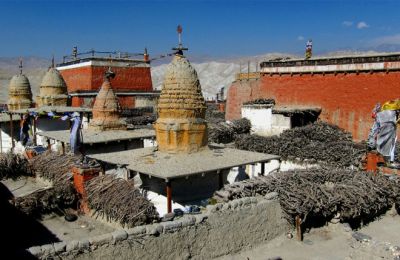
Upper Mustang Trek - 15 days
Upper Mustang Trek is a relatively new trek in Nepal as the region was opened to foreigners since 1992. Upper Mustang is culturally and geographically more similar to Tibet.
Inquire Now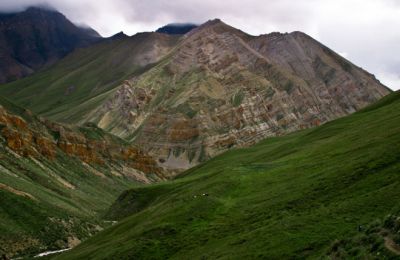
Upper Dolpo Trek - 27 days
The Upper Dolpo Trek is an epic, adventurous trekking destination that leads you to the most remote areas of mid-western Nepal. Experience both the natural and cultural richness of the Dolpo Region.
Inquire Now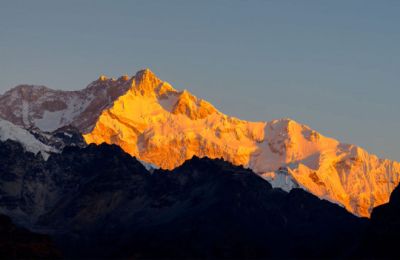
Kanchenjunga Trek - 24 days
Kanchenjunga Trek is a remarkable long remote trek into Nepal's most isolated areas of far-eastern Nepal. During 24 days Kangchenjunga circuit trek, you'll explore the area around Kanchenjunga, the third highest mountain in the world.
Inquire NowWhere to travel next?
Get help from our travel specialists for holiday ideas that matches your interests.
#6. Eastern Nepal Region
Far removed from the mainstream of Nepalese trekking regions, the far east of the country is home to two main peaks: Kanchenjunga, which at 8586m it’s the third highest mountain on Earth and Makalu, which at 8485m is the fifth highest peak on Earth. The exciting hikes to the basecamps of either of these mountains takes walkers through remote countryside where yak herders out number other foreign trekkers and facilities are limited in the extreme.
Most of the trekking routes in eastern Nepal are long and unusually tough with a huge amount of steep ascent and descent and most routes are also straight there and back affairs which might put off those who prefer circular treks. Combine this with the areas distance from Kathmandu, which makes internal flights or very long and uncomfortable bus rides obligatory, and only the occasional very rudimentary trekking lodge (and most times even these are aimed more at local shepherds rather than international trekkers), and you’ll understand why this pristine landscape is better tackled by people with some previous Himalayan trekking experience who are happy to join a fully organised camping trek.
The reward for this who do tackle this region though is the sheer beauty and diversity of the Eastern Nepal trekking region. Over the course of a couple of weeks walkers pass through pretty farming villages where the hillsides are striped in terraces, jungly sub-tropical river valleys, misty, old-growth coniferous forests and Alpine tundra until you come face to face with the crashing glaciers and fluted peaks of the mighty mountains.
Special trekking Permits and guides required.
#7. Dolpo Region
A magical region of frozen deserts, piercing blue skies, hidden monasteries, yak caravans, half-imagined gompas, electric blue lakes, and stone walled villages. This is Dolpo in western Nepal and it’s unlike anywhere else in the country. A true slice of old Tibetan culture where time is measured by the yellowing of crops in the fields and the arrival of the first winter snows. For a trekker it is undeniably one of the most fascinating parts of Nepal to walk through. You won’t find any trekking lodges, apple pies or crowded passes out here, but you will find scenery that will make you gasp in beauty and people who will welcome you with open arms.
Before you change all your plans though and head to Dolpo there are a couple of things to remember. Access, which is almost completely by small twin-prop plane is difficult, expensive and unreliable, most of the walks here are demanding, long and high with no creature comforts to look forward to at the end of the day, permits are complicated and expensive and for most (but not all) treks in the dolpo region you must go on an organised camping group trek. But for those with the stamina, patience and finances, Dolpo will leave you enchanted.
Special trekking Permits and guides required.
#8. Far Western Nepal Region
The far western region of Nepal is as off the beaten track as it’s possible to get in Nepal and even for most Nepalese the very far west of Nepal may as well be another country altogether. For a trekker, western Nepal offers many challenges and logistical nightmares; just getting to the region can be a headache and once there you will find absolutely no facilities of any sort for trekkers. But, the payback is vast swathes of untouched mountainous country just crying out to be explored. And, you really will be something of an explorer out here. Few trekking companies know much about the trails in the far west and locals still don’t quite grasp the concept of walking merely for the pleasure of it. You need patience and to be on a fully supported camping trek to come here but if you’re looking for something truly different then the far west of Nepal will probably suit.
Special trekking Permits and guides required.
Useful Links
How to get TIMS card and trekking permits in Nepal
Buying and Renting Trekking Gear in Kathmandu
How To Plan Your Trekking In Nepal?
Trekking in Nepal - Ultimate Guide for all Trekkers
- Written by: Stuart Butler
Updated: May, 2, 2023

